Travel to Longyearbyen, Svalbard, Norway
Jul 6
Your Arctic expedition begins with a flight through Oslo, Norway, on your way to Longyearbyen, the gateway to the Svalbard Archipelago
 Private Trip Available
Private Trip Available Embark on a journey to the Arctic’s crown jewel—the Svalbard Archipelago—a breathtaking gem nestled between mainland Norway and the North Pole. Here, glaciers glitter under the midnight sun, and polar bears roam freely across vast, ice-draped landscapes. This pristine wilderness is a haven not only for polar bears, but also home to other iconic Arctic wildlife, including walruses, reindeer, large seabird colonies, and numerous whale species. Cruise past towering fjords, glimmering icebergs, and expansive tundra while soaking in the untouched beauty of the Arctic.
⭐⭐⭐⭐⭐ “The trip was very well managed from start to finish. Accommodations and food were good. The boat was very comfortable. The guides were highly skilled, warm, and always open to helping with photography. The crew was great. The wildlife experiences were what I had hoped for and the scenery was more striking than I had expected. I came away learning new things, making some new friends, and looking forward to future adventures with Cheesemans’.” – Jennifer Black |
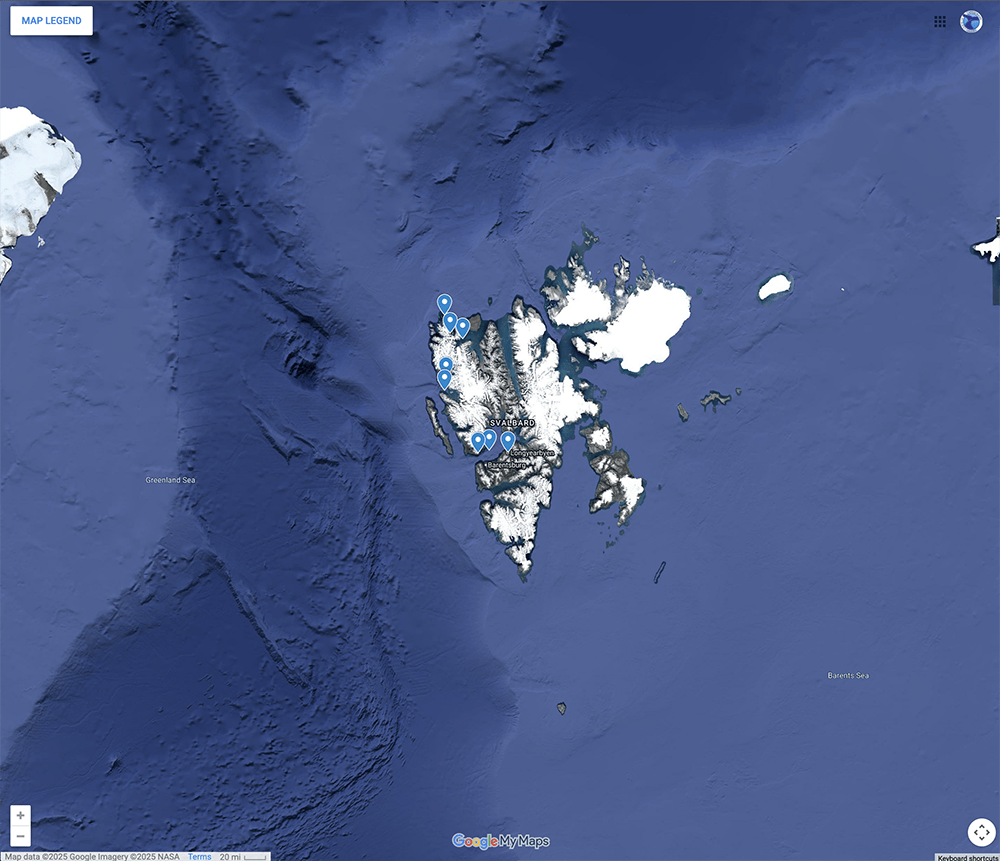
Itinerary Updated: March 2025
| Date | Description | Lodge | Meals |
|---|---|---|---|
| Jul 6 | Travel to Norway. | ||
| Jul 7 | Arrive in Longyearbyen, Svalbard, Norway. Arrive from home in time to explore this gateway to the Arctic Circle. | Radisson Blu Polar Hotel Spitsbergen, Longyearbyen | |
| Jul 8 | Board your Ship. Do some morning exploration of the town, then embark on your ship in Longyearbyen and begin your exploration of the Arctic wilderness. | Aboard your ship | B, D |
| Jul 9-17 | Explore the Svalbard Archipelago. Voyage throughout the Svalbard Archipelago with Zodiac cruises and landings for unbelievable Arctic photography and wildlife viewing in the pristine Arctic environment | Aboard your ship | B, L, D |
| Jul 18 | Leave for Home. Disembark in Longyearbyen and bid farewell to the Arctic as you board your flights homeward, carrying memories of once-in-a-lifetime experiences. | B | |
| Jul 19 | Arrive home. |
Milo is a seasoned wildlife biologist with a lifelong passion for animals, having worked extensively with bears, moose, and elk, while maintaining a keen interest in all forms of wildlife—from birds to reptiles. An accomplished wildlife photographer for over 40 years, his work has been featured in National Geographic, Audubon, Time, and Ranger Rick. Based in Cordova, Alaska for more than two decades, Milo brings a deep understanding of Arctic and Antarctic environments and has guided expeditions to both Svalbard and Antarctica for Cheeseman’s since 2023. When not guiding, he enjoys outdoor pursuits such as hiking, backcountry skiing, wild ice skating, fishing, and traveling to remarkable wildlife destinations.
Your Arctic expedition begins with a flight through Oslo, Norway, on your way to Longyearbyen, the gateway to the Svalbard Archipelago
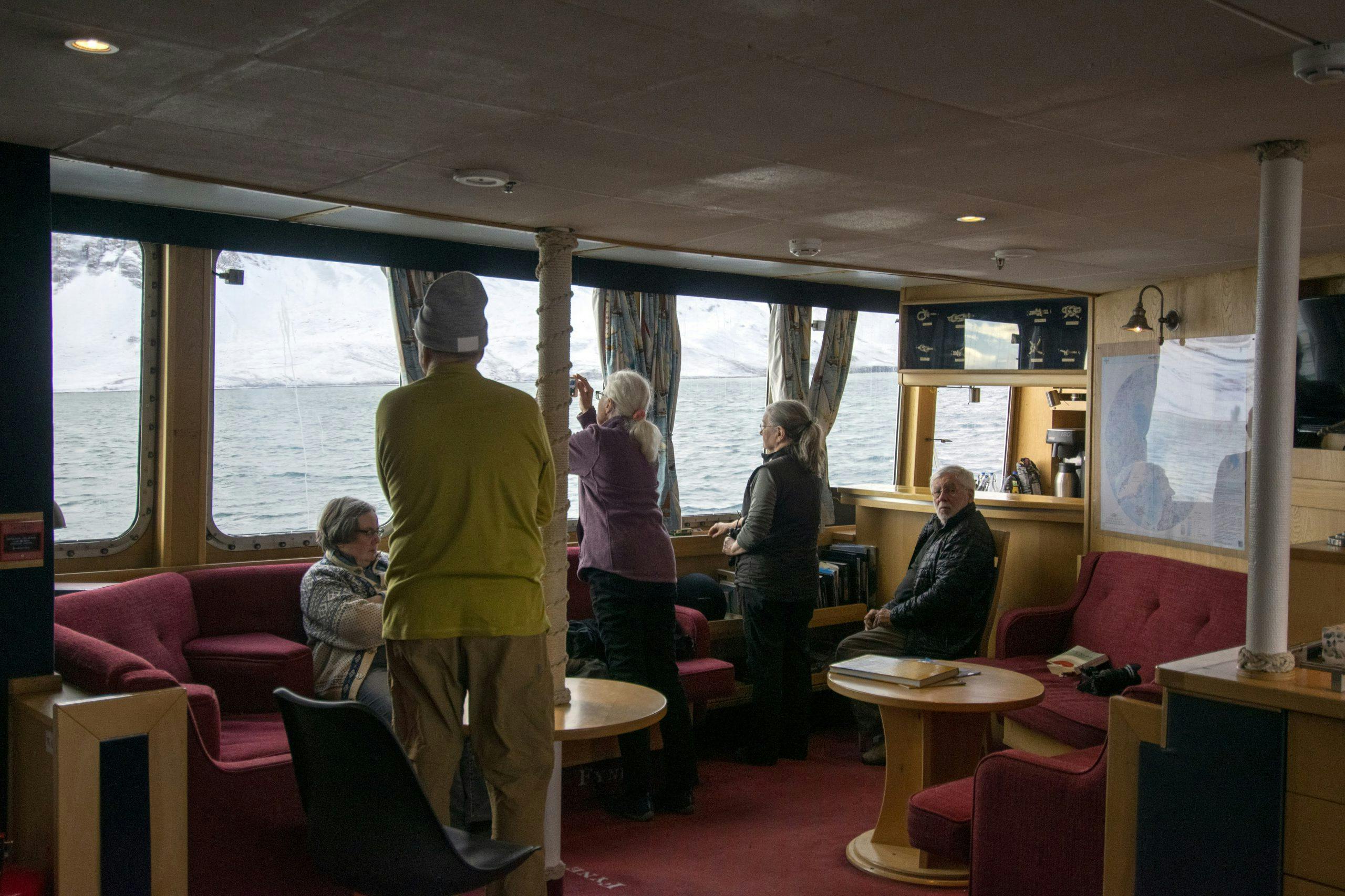
Arrive in Longyearbyen, the northernmost settlement with a significant population, located on Spitsbergen, the largest island in the Svalbard Archipelago. After settling into your accommodations for the night, explore this Arctic town surrounded by dramatic mountain scenery. Walk through trails lined with early-blooming Arctic wildflowers, and keep an eye out for local wildlife, including Svalbard ptarmigan and snow buntings nesting along the outskirts of town. Along the coastal flats, you may encounter Common Eiders, Parasitic Jaegers (Arctic Skuas), and Arctic Terns. To gain deeper insight into the region’s natural and cultural history, visit the Svalbard Museum, conveniently located near the town center.
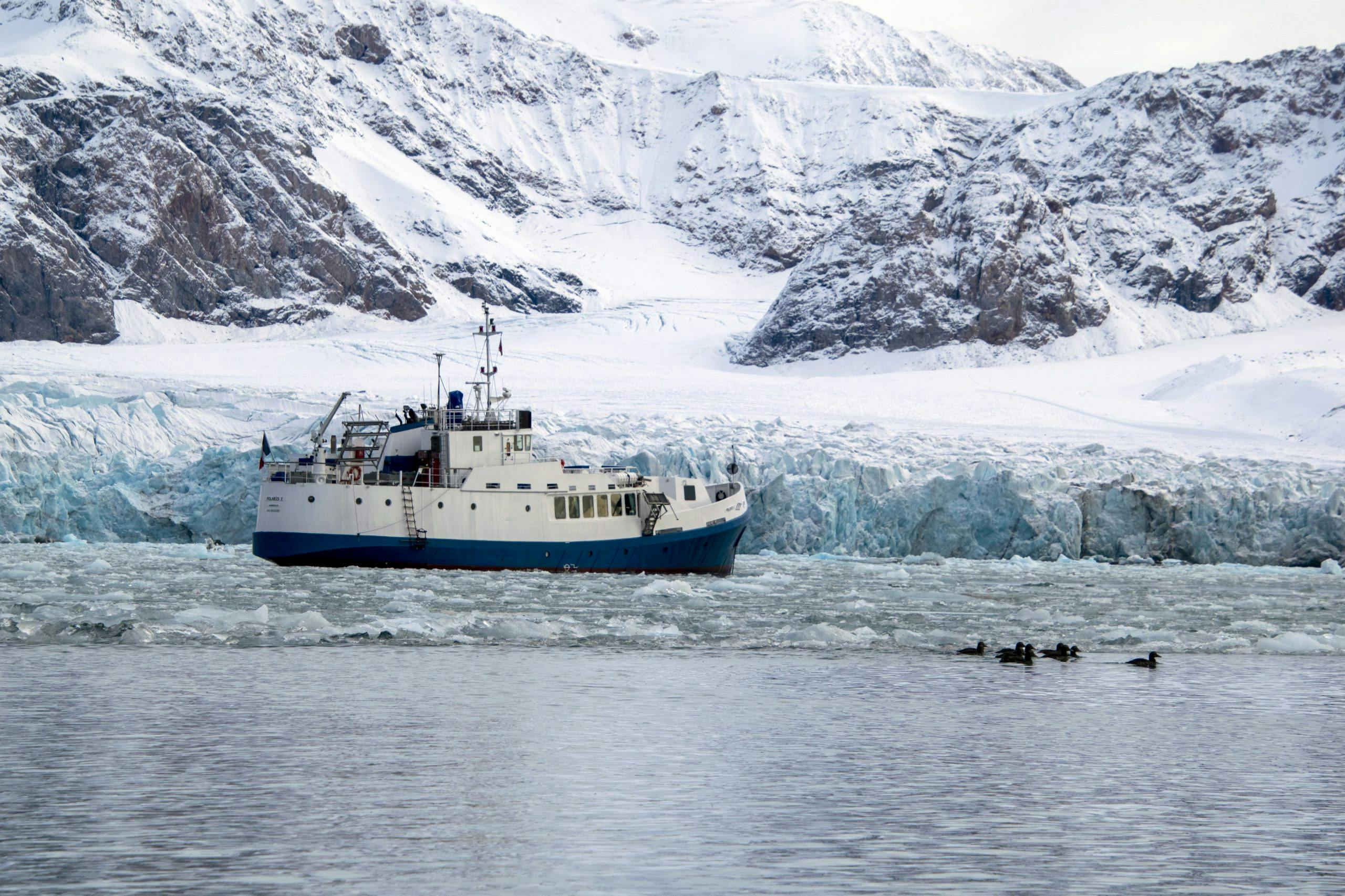
Spend the morning exploring Longyearbyen’s local shops, observing birdlife along the shores of Isfjorden, or visiting local landmarks. In the late afternoon, board your expedition ship and settle into your cabin as your Arctic voyage begins. The surrounding waters are notably calmer than those around Antarctica, offering a more comfortable sailing experience. Despite Svalbard’s northern latitude, the warming influence of the Gulf Stream creates a milder climate than one might expect. During this voyage, you will have ample opportunities for Zodiac cruises, shore landings, and wildlife viewing from the ship’s deck.
Expedition itineraries are kept flexible to adapt to weather and sea ice conditions, ensuring the best possible experiences. Photography and wildlife observation are emphasized throughout the journey, with a strong focus on respecting wildlife and following local regulations to reduce disturbance. Our small group size allows us to be patient and respectful observers, ensuring you have ample time to capture the perfect photographic moment while always prioritizing wildlife welfare and maintaining a safe, disturbance-free distance.
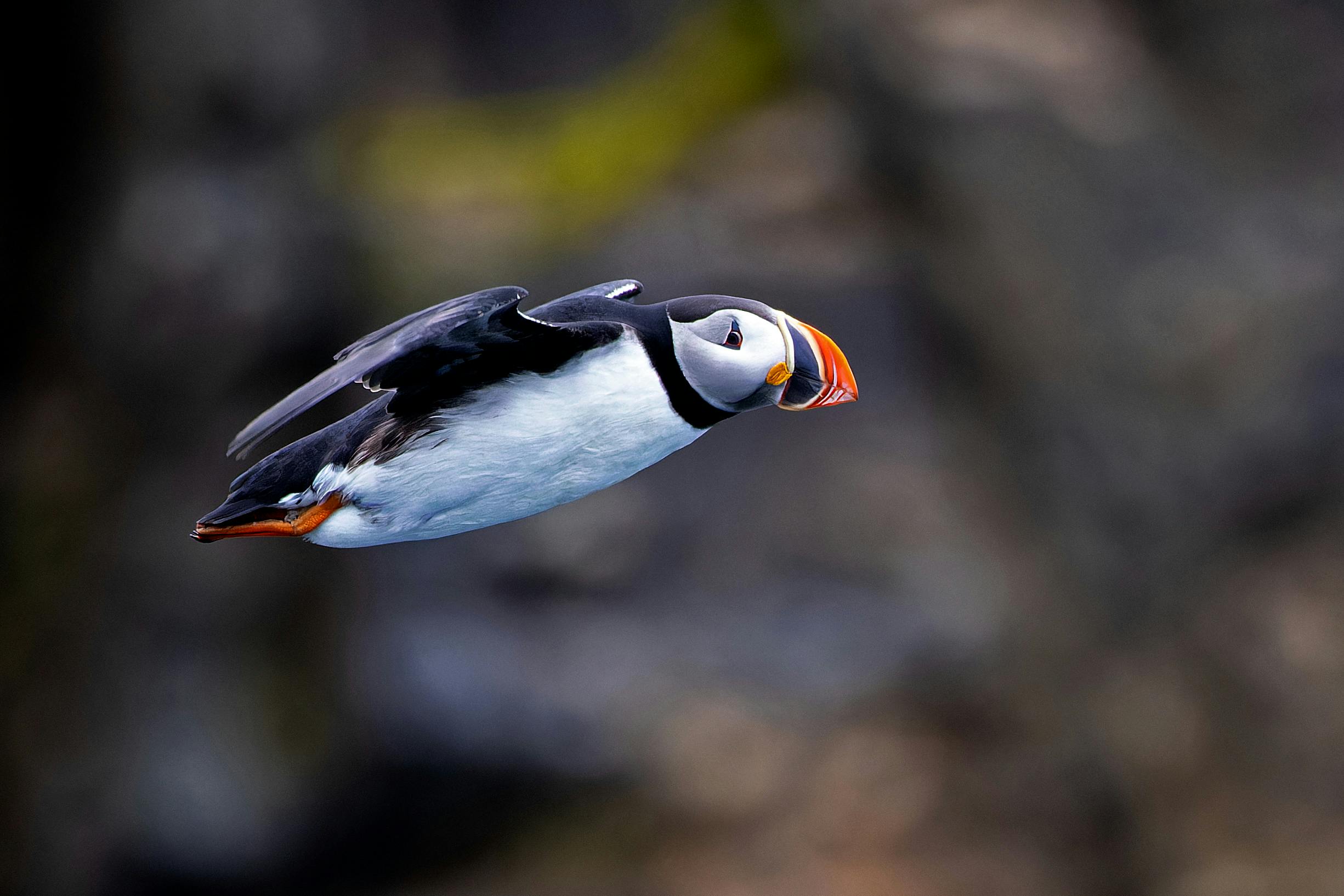
Spend nine full days exploring the rugged beauty of the Svalbard Archipelago under the 24-hour daylight of the Midnight Sun. This extended daylight provides continuous opportunities to observe and photograph Arctic wildlife in their natural habitats. The ice-filled waters and tundra landscapes support a rich variety of species, making this region a dream destination for nature enthusiasts and photographers alike. As you cruise along the shores, we’ll watch for a variety of species along the shore or on the ice, including polar bears and walruses. Inland areas offer the chance to encounter Svalbard reindeer and arctic foxes foraging across the tundra during the brief but productive summer season. The archipelago’s exposed rock strata create stunning geological displays, adding to the visual diversity of the landscape.
On the coastlines, visit thriving bird cliffs teeming with Black-legged Kittiwakes, Northern Fulmars, Atlantic Puffins, and Thick-billed Murres (Brünnich’s Guillemots). Marine mammals, including ringed and bearded seals, are often spotted lounging on icebergs or swimming nearby. Occasionally, you may glimpse a pod of beluga whales gliding through the fjords. Inland, the tundra becomes a nesting ground for Pink-footed Geese, Barnacle Geese, and King Eiders. Be mindful of nesting shorebirds such as Red Phalaropes and Arctic Terns, as these birds can become defensive if approached too closely
Here are some handy-to-know Norwegian geography terms (as seen in many of the following place names): “bukta” means bay, “sund” means sound, “sundet” or “stretet” means channel or strait, “øy” or “øya” means island, “landet” means land or country, “breen” means glacier, and, of course, “fjord” or “fjorden” means fjord or inlet.
Liefdefjorden and Monacobreen Glacier
Sail into Liefdefjorden to witness the expansive ice front of Monacobreen Glacier. This area is a prime location for polar bear sightings as they patrol the shores in search of prey, including seabird nests along the tundra. Thousands of kittiwakes often gather in the surrounding waters to feed, while geese graze the lush summer vegetation.
Raudfjorden
Along the northern coast of Spitsbergen, Raudfjorden deep inlets and towering glaciers create a breathtaking setting. The fjord’s rich biodiversity includes thriving colonies of seabirds, ringed and bearded seals, and surprisingly verdant vegetation for such a high-latitude location.
Ytre Norskøya
Hike the lichen-covered cliffs of Ytre Norskøya, a small island with a historical whaling past and significant seabird colonies. The elevated vantage points provide excellent photography opportunities of the surrounding coastline and birdlife.
Krossfjorden and Kongsfjorden
Explore two of Spitsbergen’s most beautiful fjords by Zodiac. Cruise along the majestic Fourteenth of July Glacier (Fjortende Julibreen), where the ice cliffs provide a dramatic backdrop to nesting birds and floating icebergs. Continue to Lilliehöökbreen Glacier, one of the region’s largest glacier fronts, stretching an impressive 22 kilometers..
Alkhornet
Conclude your fjord explorations with a landing near Alkhornet, a towering cliff face overlooking Isfjorden. Here, arctic foxes can often be seen scavenging for food beneath the bird cliffs, while Svalbard reindeer graze on wildflower-strewn slopes. This site offers some of the best opportunities for reindeer photography in the archipelago.
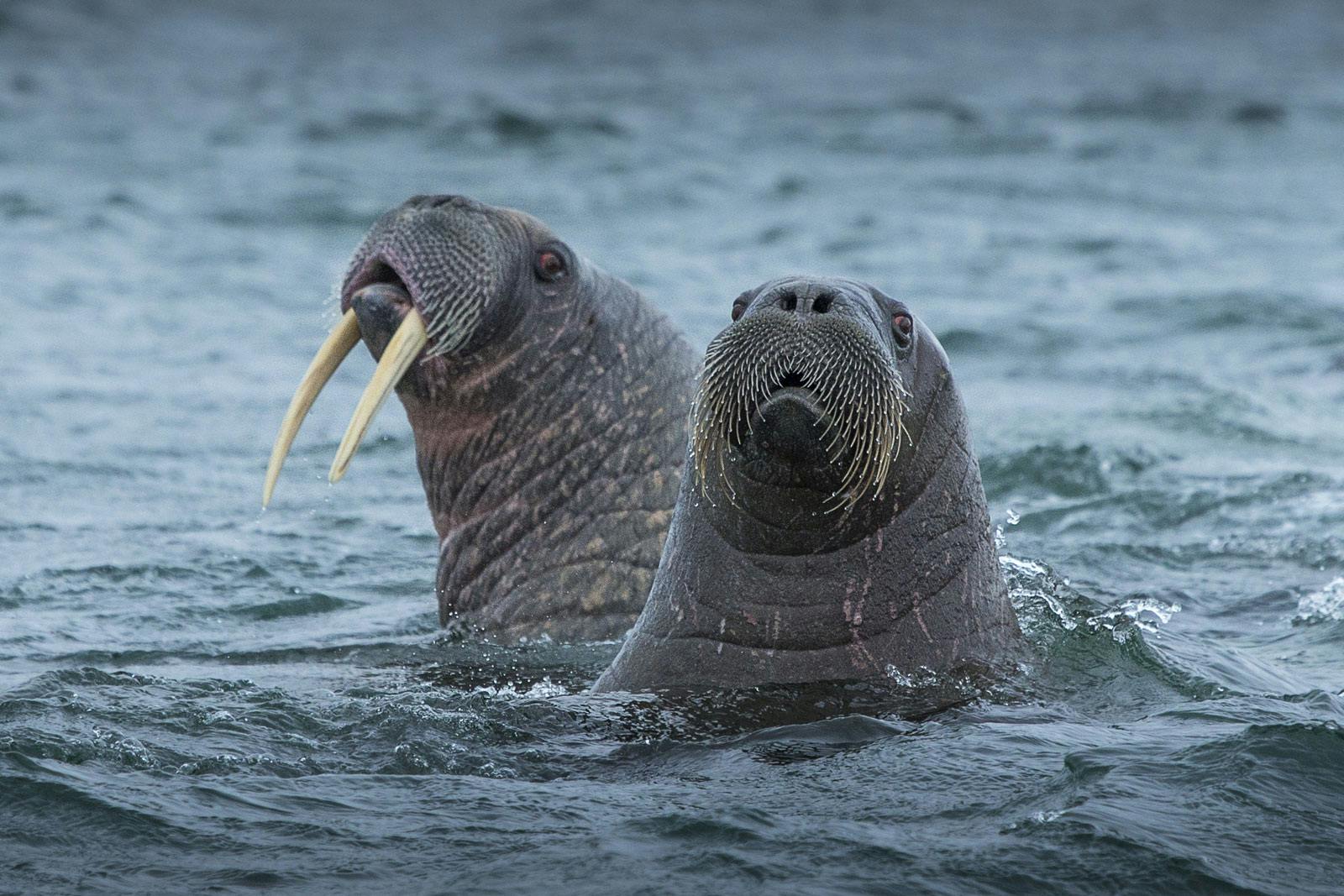
Disembark the ship around 9:00 AM in Longyearbyen. Transfer directly to the airport for your departing flight or spend additional time exploring the town before your journey home.
We chose the most well-equipped and comfortable vessel in the small ship class to ensure an exceptional experience. This ship offers both comfort and rugged capability, ideal for travelers seeking intimate exploration with top-tier amenities. Its ice-strengthened hull and shallow draft allow access to channels and inlets larger ships simply can't reach. These features enable rare wildlife encounters and amazing photo opportunities in remote, less-traveled areas.
A fleet of sturdy Zodiacs takes you ashore and into narrow bays for close-up exploration. Guides launch these boats quickly for flexible, safe, and exciting off-ship adventures. Wildlife viewing thrives on the large, dual-level observation deck positioned perfectly at the bow. You’ll spot whales, seabirds, and glaciers in comfort, thanks to the ship’s stable and open viewing areas. Inside, you’ll enjoy panoramic views through large windows in the social lounge and dining areas.
The spacious lounge invites you to relax, edit photos, and attend talks by our expert naturalist guides. After excursions, guests often gather here to share stories, learn, and review the day’s experiences. Each guest stays in a private lower-deck cabin or shared main-deck cabin with private bathroom facilities. Cabins are cozy, quiet, and well-designed for comfort throughout the voyage.
Only twelve passengers join each departure, creating a personal and peaceful expedition. Small group travel allows more time ashore, better wildlife experiences, and a closer connection to nature. This ship explores quiet, hidden places far from commercial cruise routes. You’ll find the experience deeply rewarding, both in scenery and in connection with fellow travelers. Expect exploration, comfort, and close-up access that large ships simply can’t deliver. Every element—ship size, expert crew, and flexible itinerary—makes this voyage ideal for adventurous nature lovers.
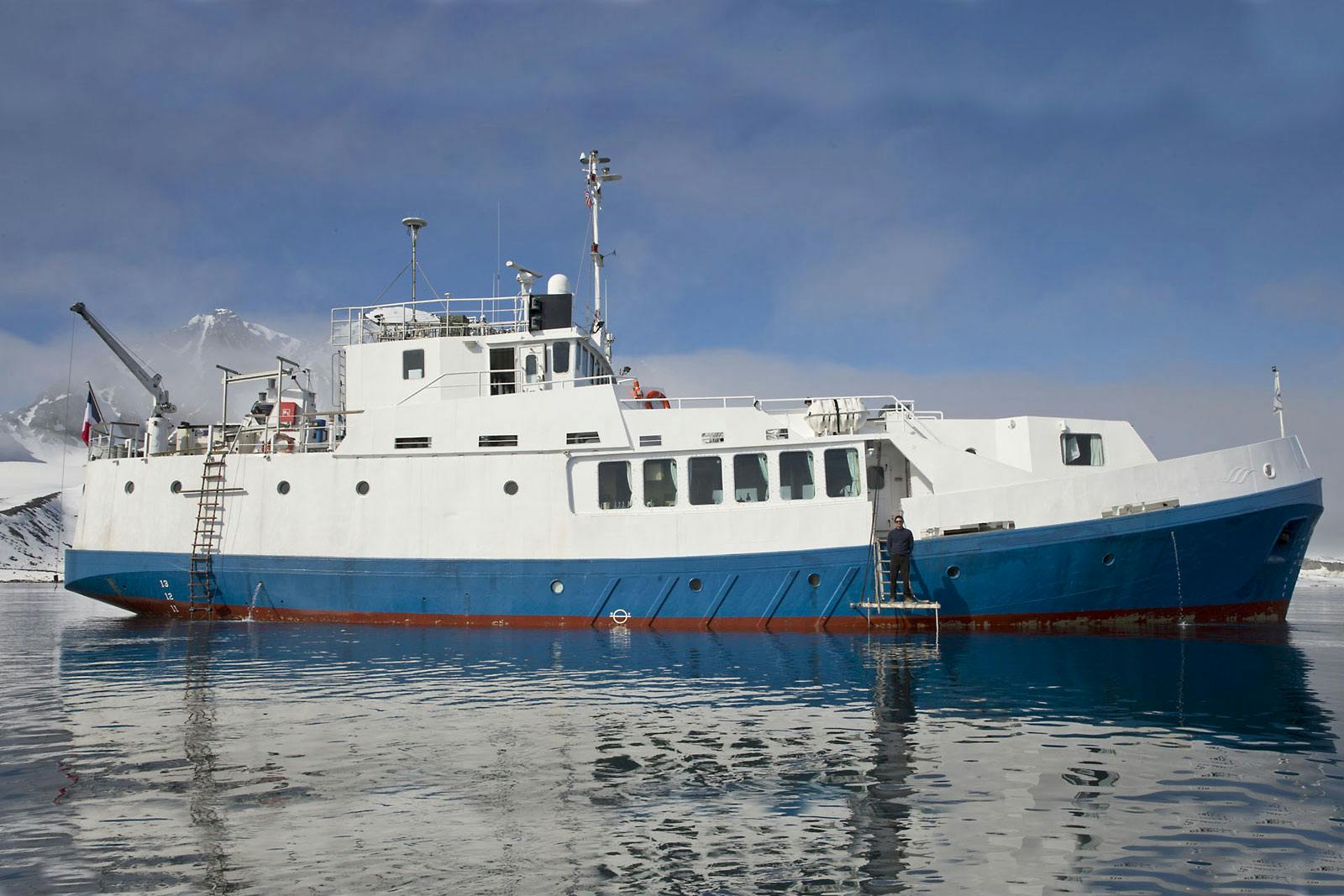
| Type | Cost Per Person |
|---|---|
| Trip Cost, single occupancy on lower deck* | $15,400 |
| Trip Cost, double occupancy on main deck | $15,400 |
| *Single occupancy aboard the ship, but double occupancy at Longyearbyen hotel. |
Costs are per person, single occupancy for lower deck cabins and double occupancy for main deck cabins, not including airfare. See Included and Not Included sections for more details.
If you are a single traveler, we will find a roommate for you at the hotel in Longyearbyen, but if we cannot find you a roommate, we may charge you a single supplement. If you prefer a single room for your included night in the hotel, it costs the same as an additional night and is subject to availability.
We cannot guarantee a specific cabin number, but if changes occur, we will assign a cabin of equal or greater value.
| Payment | Due Date | Amount Per Person |
|---|---|---|
| Deposit | Due now to reserve your space | $6,000 |
| Final | January 27, 2026 | Remaining Balance |
Payments are due based on the schedule above. All reservations require a deposit to confirm reservation of your space.
Refunds are given depending on the time left before departure according to the following table. Through November 26, 2025, the cancellation fee of $300 per person can be applied toward another trip if reserved within six months of the cancelled trip’s departure date. Cancellations are non-transferable.
| Dates | Forfeited Amount per Person |
|---|---|
| On or before November 26, 2025 | $300 |
| November 27 to December 26, 2025 | 10% of trip cost |
| December 27, 2025 to January 26, 2026 | 40% of trip cost |
| On or after January 27, 2026 | 100% of trip cost |
You will visit the Arctic during its summer with 24 hours of daylight. Weather patterns may be highly variable, so bring appropriate attire and gear to handle a mix of conditions including wind, snow, rain, and sun. Expect temperatures in the 40s°F (4 to 8°C) during the day and in the 30s° (0 to 4°C) at night, but weather fronts can cause temperatures to either drop further or rise to the 50s and low 60s°F (10 to 17°C).
You must be able to get in and out of the Zodiacs, from the ship, via a six-foot ladder with staff assisting above and below you. Once ashore, you must be also able to get in and out of the Zodiacs onto the beach. You’ll have opportunities for a range of activities from easy, short hikes to longer, more vigorous hikes for those interested. Please contact us if you have any health concerns that may make this trip challenging.
Detailed logistical information is included in the Trip Planning Materials we will send you.
Flights you book
With only twelve passenger cabins, our ship is smaller than most ships in Svalbard, allowing you to travel farther into smaller inlets than other ships. Our small group size gives you the flexibility to seize the moment and enjoy special wildlife encounters. With two leaders and only twelve passengers, you will receive plenty of individual attention. And, with two Zodiacs, you have plenty of room for you and your photography gear.
June and July represent the peak months of the short but incredibly productive Arctic summer in Svalbard. In addition to polar bears, it is during these months we see a peak of summer animal activity including the amassing of significant bird colonies, the beginning of the short season of wildflower blooming, the potential to discover arctic fox families with their new pup additions, and ice-free access to various walrus haul out locations. It is also during the short summer that the pack ice breaks up enough to allow further exploration of the far north fjords and coastline that is otherwise inaccessible due to ice during the winter and early spring months.
Because our two expeditions visit the archipelago back-to-back, spanning four weeks, your wildlife encounters will not vary much, but the July expedition may have slightly more opportunities for wildflowers and less ice.
As of January 1, 2025, Norway has introduced stricter environmental regulations to protect Svalbard’s Arctic ecosystem. Key changes include limiting landings to 43 designated sites, enforcing stricter drone usage, reducing speeds near wildlife, and increasing wildlife viewing distances (e.g., 300–500 meters for polar bears, dependent on the time of year). Small-ship expeditions like ours, with just 12 guests, can still access all permitted sites. These rules ensure meaningful exploration while safeguarding the region’s fragile environment.
The updated measures reduce stress on wildlife, protect sensitive habitats, and prioritize low-impact travel. Restrictions on speed, sea ice navigation, and onshore activities help preserve Svalbard’s pristine wilderness. Our conservation-focused approach already aligns with these standards, ensuring visitors experience the Arctic’s untouched beauty while contributing to its long-term protection.
Don’t let a fear of motion sickness keep you away! Even those who have experienced seasickness reported that the incredible wildlife and overall experience were well worth the temporary discomfort. If you are susceptible to seasickness or are concerned that you might be, please come prepared! The key to avoiding seasickness is to act before you experience nausea. Do your own research and consult your doctor before taking any medications. A good night of sleep, eating well, limiting alcohol, and using your favorite seasickness remedy is sufficient for most travelers. Find more information on our Coping with Seasickness webpage (this information is applicable to any form of motion sickness) and contact us if you have any questions.
Our company ethos has always regarded conservation as inseparable from responsible tourism. We struggle with the dilemma that traveling worldwide expends climate-changing carbon. However, we wholeheartedly believe that traveling with us will cultivate your passion for conserving our beautiful world while stimulating each destination’s local economy. We encourage you to explore the various ways in which Cheesemans’ operates within this context:
Read our current Terms and Conditions.
 Milo Burcham
Milo Burcham